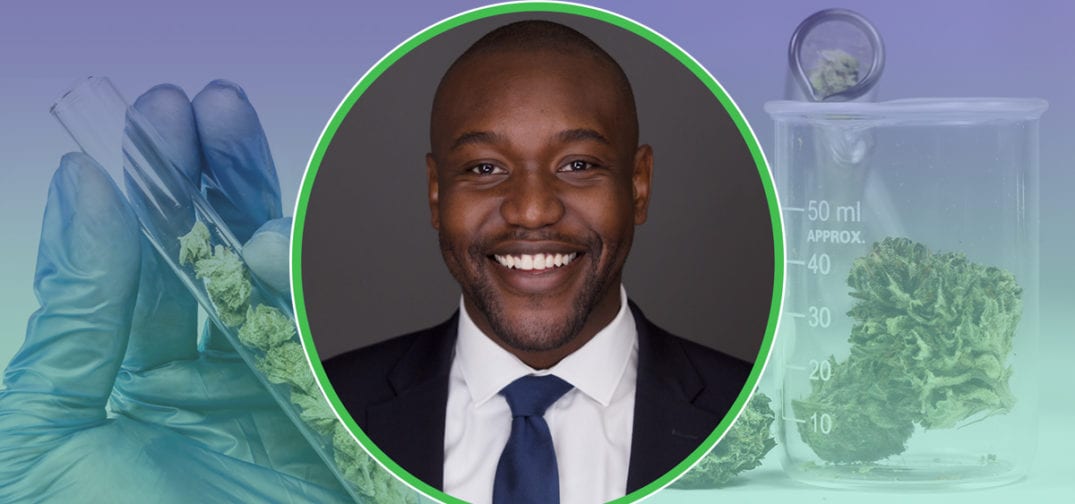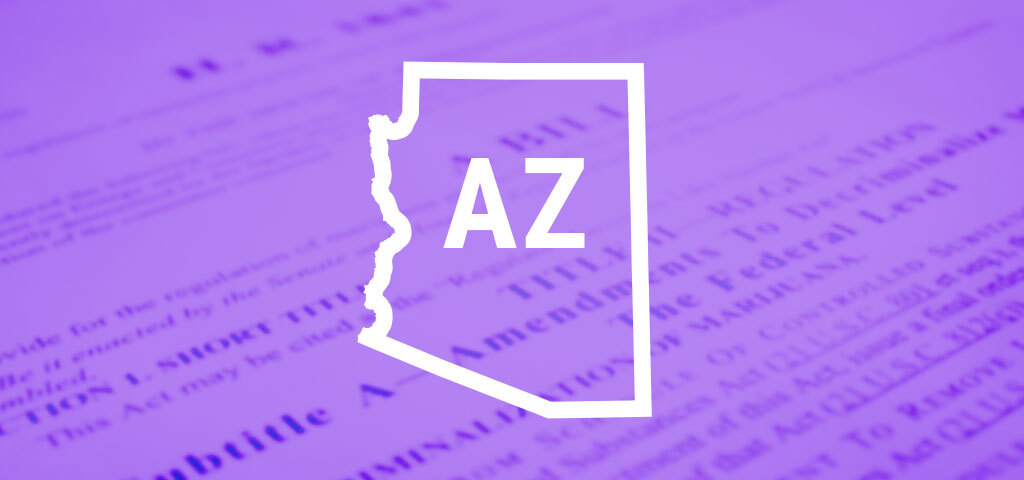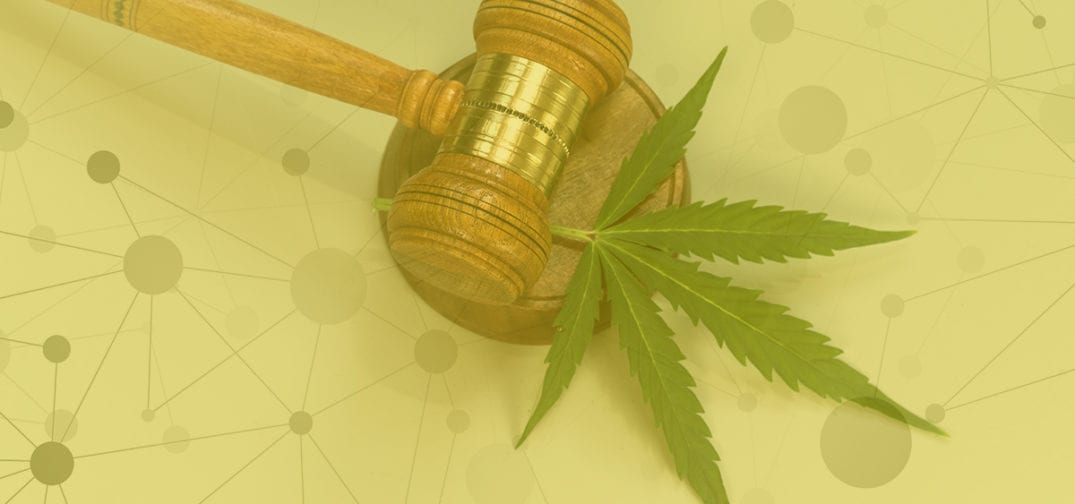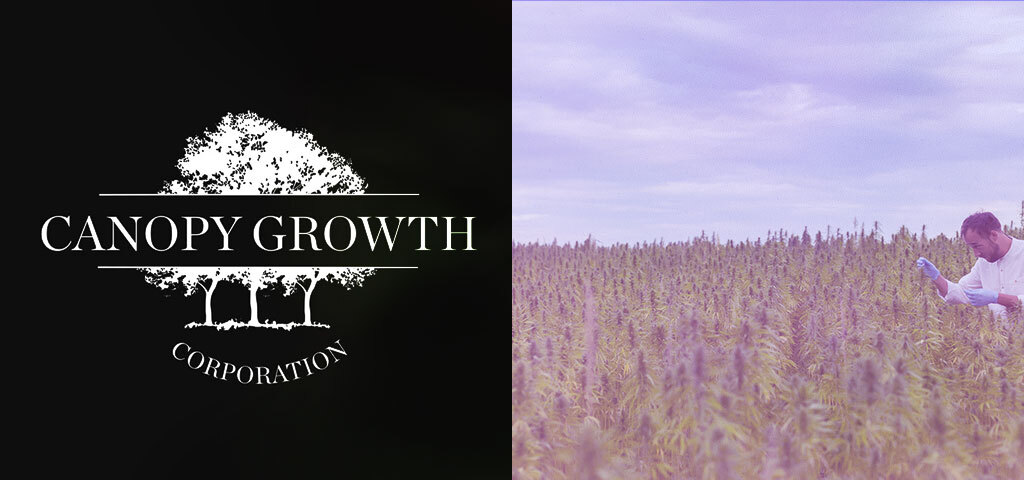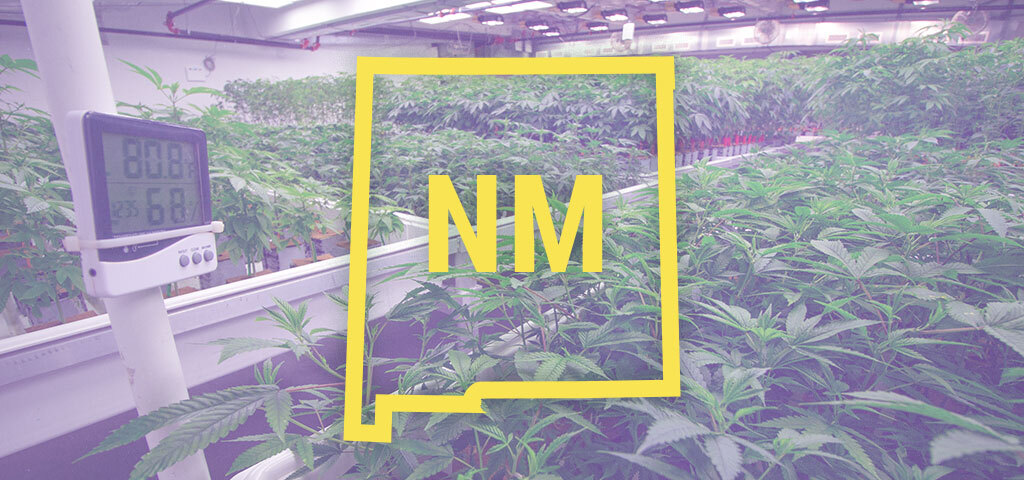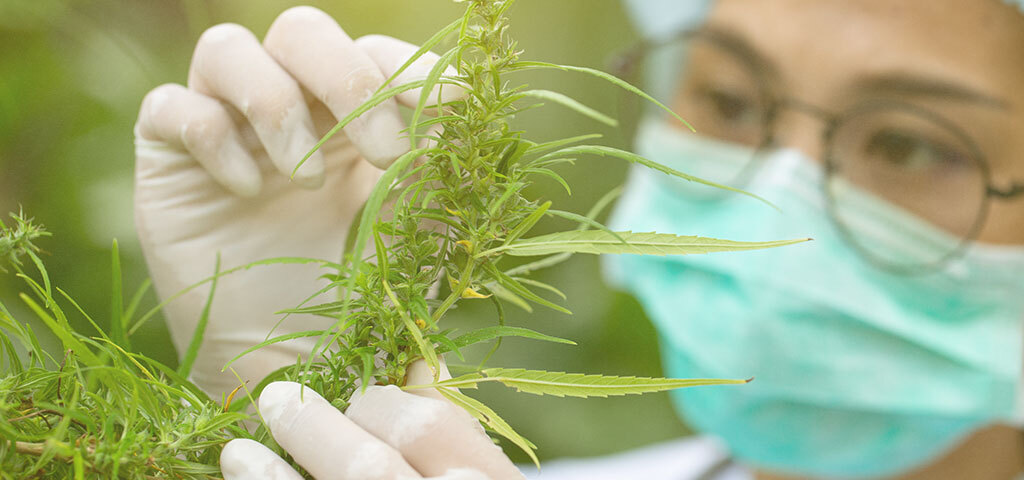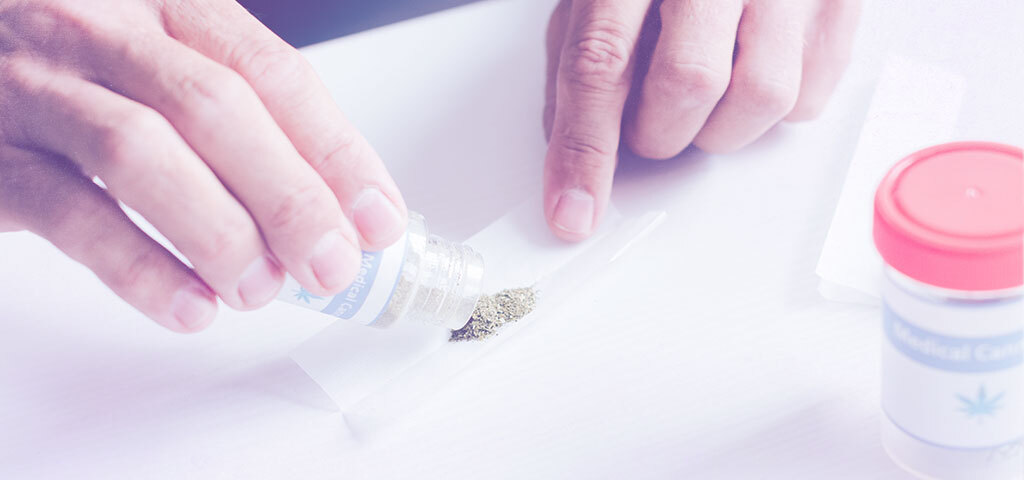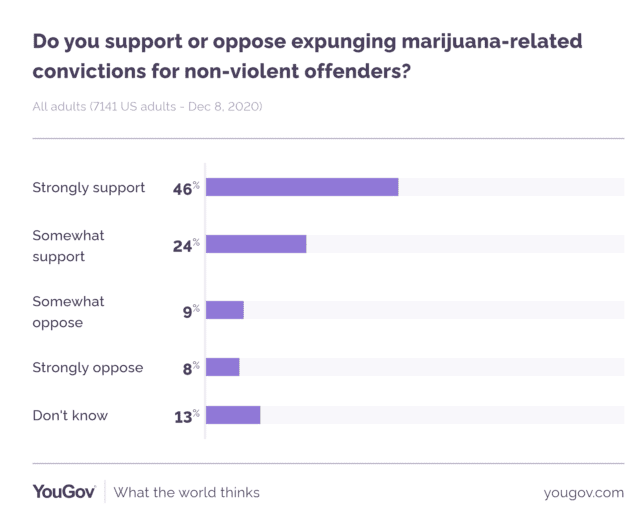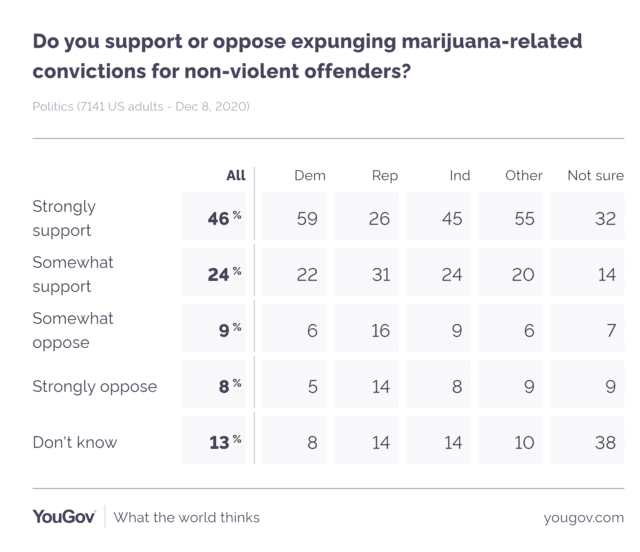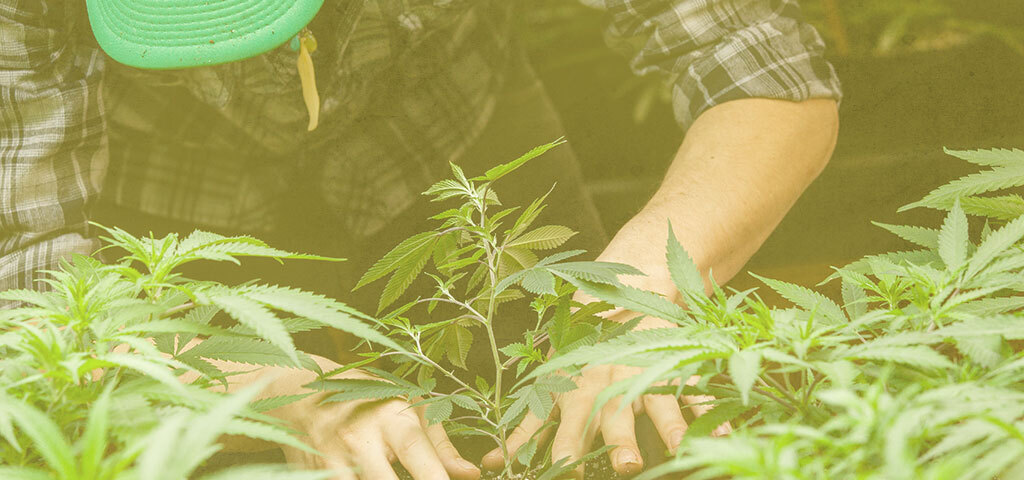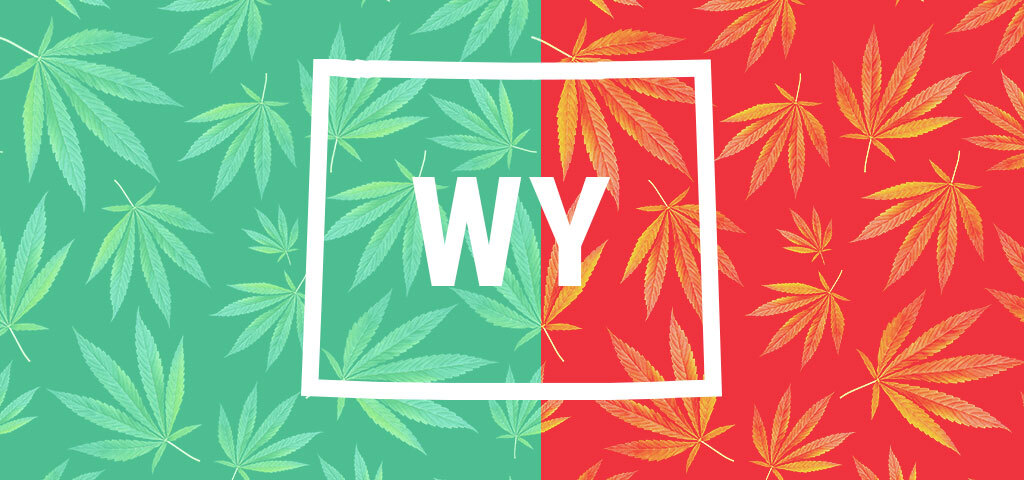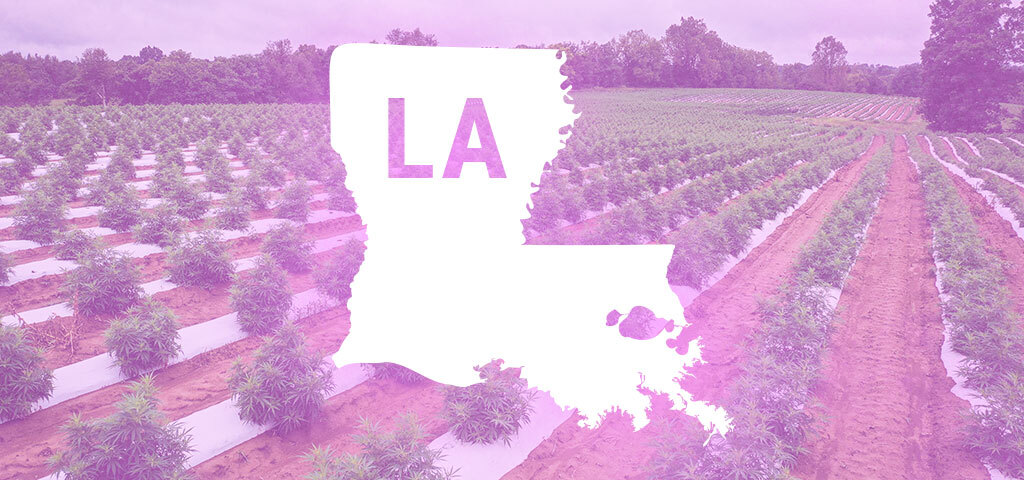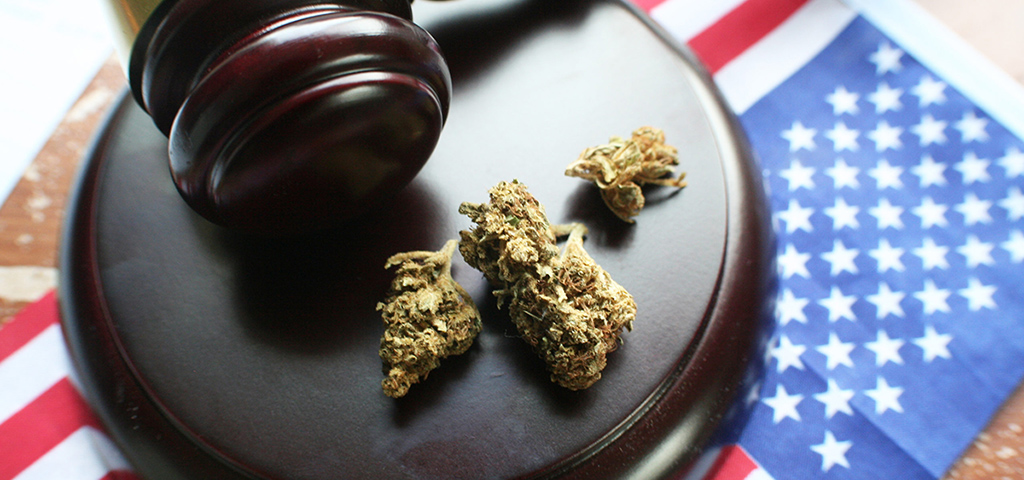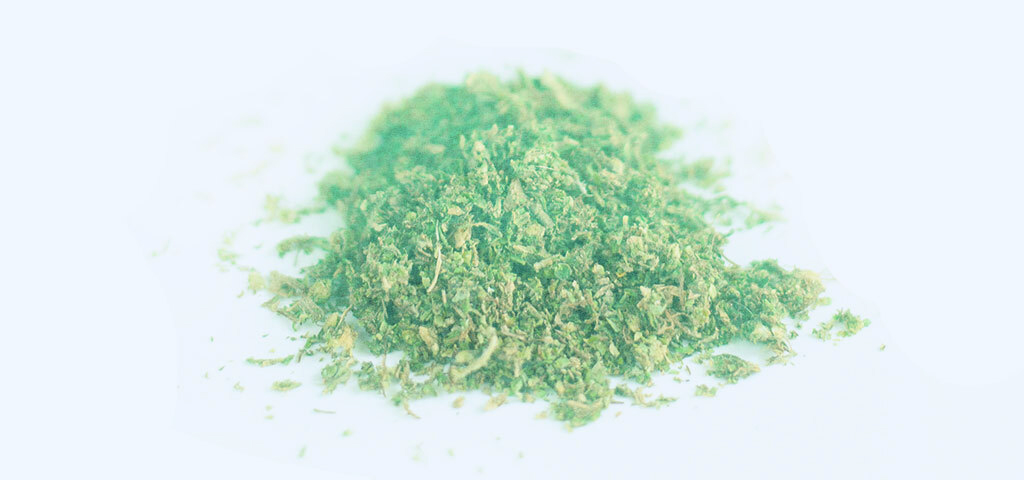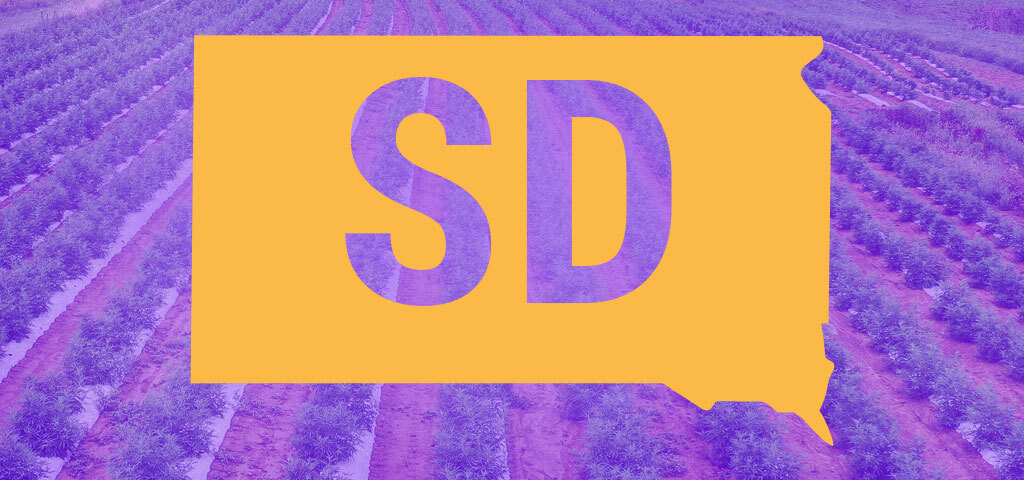In any industry, consumer product testing is a key part of maintaining safe and trustworthy operations. While the cannabis industry is no different, there are often (and unfortunately) big differences between the testing labs that conduct consumer safety tests.
In this podcast interview, Antonio talks to our host TG Branfalt about the importance of laboratory accreditation — which is when a laboratory and its offerings are evaluated by a highly qualified third party — and what it means for the cannabis industry. Antonio also shares the story of how CannaSafe became the first lab in the country to link the vitamin E acetate compound to last year’s vape lung disease crisis, his experience as a Black executive in the predominantly white cannabis industry, and more!
Scroll down or visit your favorite podcast listening platform to hear this week’s episode of the Ganjapreneur podcast, or read along with the transcript posted under the media player below.
Listen to the podcast:
Read the transcript:
Commercial: At Ganjapreneur, we have heard from dozens of cannabis business owners who have encountered the issue of cannabias, which is when a mainstream business, whether a landlord, bank, or some other provider of vital business services refuses to do business with them simply because of their association with cannabis. We have even heard stories of businesses being unable to provide health and life insurance for their employees because the insurance providers were too afraid to work with them. We believe that this fear is totally unreasonable, and that cannabis business owners deserve access to the same services and resources that other businesses are afforded, that they should be able to hire consultation to help them follow the letter of the law in their business endeavors, and that they should be able to provide employee benefits without needing to compromise on the quality of coverage they can offer. This is why we created the Ganjapreneur.com Business Service Directory, a resource for cannabis professionals to find and connect with service providers who are cannabis friendly and who are actively seeking cannabis industry clients.
If you are considering hiring a business consultant, lawyer, accountant, web designer, or any other ancillary service for your business, go to Ganjapreneur.com/businesses to browse hundreds of agencies, firms, and organizations who support cannabis legalization and who want to help you grow your business. With so many options to choose from in each service category, you will be able to browse company profiles and do research on multiple companies in advance, so you can find the provider who is the best fit for your particular need. Our business service directory is intended to be a useful and well-maintained resource, which is why we individually vet each listing that is submitted.
If you are a business service provider who wants to work with cannabis clients, you may be a good fit for our service director. Go to Ganjapreneur.com/businesses to create your profile and start connecting with cannabis entrepreneurs today.
TG Branfalt: Hey there. I’m your host, TG Branfalt, and thank you for listening to the Ganjapreneur.com Podcast, where we try to bring you actionable information and normalize cannabis through the stories of Ganjapreneurs, activists and industry stakeholders. Today, I’m joined by Antonio Frazier. He’s the president of CannaSafe, a California-based ISO-accredited cannabis and hemp testing laboratory, the first cannabis-focused lab in the world to earn the ISO certification. Frazier holds a Bachelor of Science degree from Furman University and a Bachelor’s in materials engineering from Clemson. How are you doing this afternoon, Antonio?
Antonio Frazier: I’m doing well, TG. Thanks for having me. Excited to share some of the story and really get you to prod the information out of my head. I’m familiar with your work, so excited to see where we flow today.
TG Branfalt: Yeah, man. I love testing guys, too, because you guys have this wealth of knowledge based on what you do with chemistry that really excites me. Before we get into all that, man, tell me about yourself. How’d you end up in the cannabis space?
Antonio Frazier: Yeah. As you noted earlier, I’m a materials engineer. My focus is metallurgy, so I was working in aerospace engineering prior to this. I was running an internal compliance lab for a manufacturing facility, dealing with the foundry, heat tree department, planning department. Very technical stuff, but more mechanical. And obviously, when you’re going to war, you want your jet engines not to overheat or to be the most combustible. Yeah, really just nerdy stuff that really wasn’t very human. It really wasn’t very pleasing, it wasn’t very satisfying work.
My old college teammate, Aaron Riley, who’s our CEO, actually got arrested for cannabis early on in school. He was about three years, four years younger than me but left the same year I did, although I graduated and he got arrested. We like to do the Martha Stewart/Snoop Dogg thing. When you see us, we’re like, “Who do you think got arrested? Who do you think is the one?” I guess people that are listening can’t tell, but I’m a 6’5″ black guy, he’s a white guy. It just breaks the unfortunate stigmas that our country built.
Anyway, he was trying to get back into the space. He actually finished his degree at JU down in Florida, got an MBA as well. He was an entrepreneur, 23 or so, become a millionaire flipping cars and real estate, doing all these different things. And I was like, “Whoa,” really impressed with him. But he started reaching out to me like, “Hey, I’m interested in what you’re doing. I hear your lab is ISO-accredited. I’m looking at cannabis. I think I’m hearing that that’s going to be a thing. One other lab I’m talking to keeps talking about the ISO accredited and how important it is, and you do that. Can you help me?”
And I was like, “No, not really. I’m not a chemist. I’m an engineer. I blow things up more than I analyze them, so it’s not really my skillset.” He’s like, “No, I need a business partner to help me make sure one, I’m compliant, and two, to make sure that I’m dealing with the right people. You’ve dealt with this type of chemical background before.” I was like, “I guess that sounds cool. Yeah, I am cool.” He’d be talking me up, not really realizing him being an entrepreneur, he’s selling me on myself. He’s saying some things I’d understand.
Anyway, just over two visits, he visited D.C., where I was at the time with my then girlfriend, now wife. He visited us a few times. Made the trip one time driving a Lamborghini. If you just know Aaron, you just know how appropriate that detail is. Some people would probably be laughing right now. He just convinced us to come out, honestly. We eventually made the trip out to SoCal, and man, the weather just really… Me and my wife were like, “Whoa. What is this? This is really dope.” Opportunity to be a partner in a business that was growing. Right before that time, they came out saying cannabis was going to be the next internet. We were like, “Hey, we don’t want to be those guys that missed on Apple at one point in time, so let’s go out there and do it.” Sorry, long story there, but that’s really how I got out here.
TG Branfalt: And you mentioned you met Riley through football. I want to know about your experiences as a college athlete, specifically dealing with your views on cannabis at that time. As an athlete, were you sidestepping drug tests, or did you abstain?
Antonio Frazier: Good question. That’s something I never really talked about before. Certainly being an athlete on college campuses, it’s not allowed. It’s illegal. It wasn’t on the surface. I think the coaches knew. There was one crowd that everyone knew smoked, then there was the crowd that was around the crowd. I think there was some layers to it all. Obviously, Aaron becoming a weed man at some point was heavily involved with it all.
But yeah, you had code words for what you were doing after practice if you wanted to talk about it, seeing if someone had money to put in on it or no, making sure someone left weights quickly enough to go meet the guy that was going. We just had different code words to make sure that everything got done, cause you couldn’t talk about it.
But for the most part, the time, you don’t really realize it, but if you’re a college athlete and as much as we worked out, as long as you weren’t pretty idiotic, you could pretty much… If you had a day you could get away with a test, not a lot of fat on you, you drink enough water. You obviously can dilute your pee. That’s also a trick. You also cannot dilute in just pee water, because they’ll make you stay and pee again. Yeah, for the most part, everyone was pretty good, but there were a few guys that smoked enough to where they obviously could not, no matter what they did. They were in trouble. I actually think I got away with it, because I was the nerdy black kid. So it only happened like twice, maybe.
TG Branfalt: Really?
Antonio Frazier: Yeah. And then once I started going to Clemson, especially, because I actually took classes at Clemson when I played at Furman. I think by me not being enrolled in Furman, maybe I never was on their radar, because my last three years, I got none. I was pretty lucky there. I don’t know if they ever noticed that or not, but I assume it’s because I wasn’t enrolled at Furman at the time, so the academia, so I didn’t get put on their list of students to get tested. And I wasn’t going to ask the question, either, so I never understood why. But my last three years, I was drug test-free, so quite lucky there.
TG Branfalt: Being an athlete, do you still know other people who are maybe not in organized athletics, but are still doing athletic things that are relying on CBD?
Antonio Frazier: Oh, man. Absolutely. I don’t think I know people. It’s becoming a large segment of the people. The question that we get as a business, people are looking for safe products, because a lot of athletes are more concerned with what’s going in their body. Certainly, topicals are definitely a… Even myself, I’m a huge topical user. I wouldn’t call myself an athlete anymore, though certainly, I have embraced that. Three kids in, I certainly don’t take as much pride probably as I used to. I’m not sure.
But anyway, most certainly, I’ve seen that crowd ask more… They’re becoming influencers. Gronkowski has a CBD line. I think there’s a woman president of the NBA Players Union. She’s invested in a CBD company. The NHL is very open about it. I think the UFC even has some kind of CBD or Cannabinoid Center that they’re doing stuff with. Most certainly looking to get involved with all these same more athletic background, but we certainly see it as an opportunity. We deal with athletes already. We definitely have some of that. They’re curious about it. I think a lot of them look for brands, though, so everybody rather go the product consumer side. But a lot of them are starting to see the safety angle of it.
Honestly, if anyone’s listening, you can come on and knock on our door, and we’re looking for partnerships in different ways to promote this athletic, this health and safety-type lifestyle of what we do, because we want to de-stigmatize. You guys said normalizing in the intro, but we’re all about de-stigmatizing, because let’s keep it real. It’s the moms that are using this stuff, too. A lot of these legal sales aren’t the 20 to 25-year-olds, that they don’t give a shit about it to test it, nor can they afford the taxes for it all. A lot of the people supporting the legal market aren’t necessarily your traditional stoner type, because a lot of those people aren’t really participating in the legal market because of the expensiveness.
TG Branfalt: And to your point, the closest dispensaries to me are in Massachusetts. And when I go there, it’s predominantly folks my mother’s age.
Antonio Frazier: Yep. People don’t realize that.
TG Branfalt: Yeah. It’s really interesting. Let’s talk about the importance of testing beyond safety and compliance. One of the things that I really like about the legal market is the testing aspect, because I like knowing about the terpenes and the cannabinoid makeups. And I think that information helps us break that indica-sativa paradigm. Is that something that has become important to your work as well?
Antonio Frazier: Yeah. Obviously, the sativa versus indica is one of those things where eventually it’s going to go away. There’re so many hybrids. People realize it’s not as important as it once was. Obviously, some strains are heavier than others, but you can get the characteristics in both types of plant. But with the terpenes, there’s things that really do have an impact. The entourage effects from terpenes are clearly determined in your experience, so that information is clearly becoming to influence patients and users, and that’s what testing can do for you.
And safety is a big deal, because quite frankly, a lot of these people that are sick, they have vulnerable immune systems. And obviously, not everyone’s intending to do something dirty, but a lot of times, if you cut your plant down too soon, it’s a little too wet. You may dry it, some people may, but not everyone will, and if you package it too soon, it will grow microbials while it’s in the packaging. While you may have packaged it up, it looks good, two months later on somebody’s shelf, it could be growing mold. Colorado went through a bunch of recalls due to that, because they weren’t doing the testing the proper way, but they put better rules in now.
Another thing to your point, if you’re in a state that doesn’t have legal access, you don’t even understand some of this stuff, so you don’t even know what matters. Just because of your background and your mission, you’re obviously of what’s separating the legal versus the illicit market, and obviously, safety and testing is that barrier. And price is the unfortunate difference, too, that makes people lean towards the traditional market, but that testing is so important because of safety, but also to help us understand how to literally dose this, which is beyond important to the medicinal effect, because you can’t just flower… Unfortunately, the botanical drug is not the best format for this medicine, due to the fact that it’s not really dose-able.
As much as I enjoy it, I’m a flower guy, I will forever be a smoker, no matter how much people tell me it’s bad for my lungs, but I’ll keep it real. Some people are sick that shouldn’t be smoking. They shouldn’t be smoking flower. They should be smoking vape devices, which is much cleaner aerosol. It’s just about that education. The R&D part of testing, I think, is even more important to teach people how the mechanisms… And what’s important, I think, is even more. We saw with the vape crisis last year, people think, “Oh my god, these carts are $20 cheaper, and it’s all the same. What are you saying, my man?” And you get you what you pay for, and unfortunately, it cost some people their lives and some people some really down times, some really bad times in the hospital because of such.
TG Branfalt: We’re going to talk about… Your lab played a role in discovering this link between vitamin E acetate and the vape-related pulmonary illness. Before we get into that, I want to just make listeners aware of what ISO accreditation is and what it takes to get that accreditation.
Antonio Frazier: Yeah, let’s definitely back that up there, because we mentioned it earlier but didn’t go into it. It’s ISO 17025, which is the international spec that dictates how laboratories should operate. It’s not an end-all, be-all, but what it does, it says that this lab has gone under an audit, an accreditation process through a third party that has determined that not only do they have SOPs and instructions for how to do the work, but it’s traceable, so someone can come behind and see what happened. And then third, there’s some level of validation done to your method. They come in and make sure your methods can produce data to a certain level of accuracy and precision.
Obviously, the tricky part is, you can get accredited for cannabis, testing the plant, but testing a plant versus testing a… What is something crazy here? Or a drink or an edible is very different, so therefore, the ISO accreditation basically needs to be understood even more in depth to account for all the different matrices and things that we see. It’s just the beginning. Someone can be ISO for potency, and then they claim, “I’m ISO-accredited,” but they can’t test for heavy metals, and they don’t do it very well. You’re seeing it in Florida right now. A lot of these labs have been ISO-accredited for some time, but not for all the trickier tests that we’re used to doing, and then they struggle quite heavily with doing so, and they’re actually not able to do those tests the way that they claim they can.
TG Branfalt: Tell me about that role that your lab played in discovering that link between vitamin E acetate and vape-related pulmonary illness.
Antonio Frazier: With Vape Gate, the big thing for us is that, us being a lab obviously testing cannabis already, it was honestly, being in L.A., the access to the illicit market. We literally had illicit delivery service bring us these dirty carts, so it was pretty simple to have it. And we also test more than, of course, anyone else in the industry. We have all the legal carts in the world, and then we have access to the illicit carts pretty simply, which is where the CDC may not get all the carts. We got 20 carts delivered, where they may get the in use of one cart that a parent submitted after their child got sick, so they don’t really get enough material to test.
Therefore, just being in the industry, because let’s keep it real, it wasn’t that much of a secret. It wasn’t that much of a secret, so the industry knew exactly what was happening, and we just had to figure out how to get the data available for someone to take note of it. That’s why we use the ISO accreditation. We got ISO-accredited to test for vitamin E acetate to prove that we were doing it properly, and that obviously had been on NBC, because not only had we done the analysis, the data was something you could stand on. It wasn’t an opinion. It was something that we had actual physical carts, we compared the difference between all the things in legal versus the illicit, and it was clear vitamin E acetate was in there for more than 10% to 30%, and that stuff is not good for your lungs whatsoever.
Therefore, we were able to make a pretty quick determination, and CDC obviously confirmed it 20 or 30 days later, so it’s pretty cool to put something out and then the CDC agrees with you. It really did change the idea of a cannabis lab to being a forefront of consumer safety. We got billions of impressions from that, from the interview. It really did take us to the next level, from just a lab to a brand. And fighting for consumer safety, not making products. Totally different than most people are used to seeing. That’s what happened.
TG Branfalt: As a self-described nerd, how fascinating was this for you to participate in this?
Antonio Frazier: Oh my god, it was thrilling. It’s why you do it. It was the rush, it was the news, it was getting a new assay online, making sure it was validated. It was all those things. We had data, but then we decided to hold off on it, because we hadn’t validated our instrument yet. We were saying, “Well, let’s not put it out yet.” It was that concern of would someone else figure it out, because the word was getting around what we were doing. But just being able to put it together and having an awesome media department also being able to put a report out.
And honestly, we had 120 legal brands submit samples to us during that time, too. The industry just stepped up, and obviously it was good for us and our pockets as well, for getting to step up and want to be a part of this and prove that their carts did not have this in it. Brands that don’t test with us normally just suddenly started submitting samples, because they wanted to make sure they were on the right end of this. It was really a good movement. It was a feel-good. It was science, it was industry, it was community, it was health, it was patients. It just checked every single box of why you wake up, and then you can look at your bank account and see it grow, and you’re like, “Wow!” One of those euphoric moments of, “Holy shit, we just helped save legal cannabis.”
They were talking about banning vapes, so all these things were going on that we were able to shift the whole conversation nationwide from cannabis to illicit cannabis, and separate ourselves from e-cigarettes and all those things with the kids and the flavorings, because we didn’t have flavorings. That’s another thing people don’t realize, that we also determined that the flavoring was an issue as well.
TG Branfalt: You guys are celebrating National Expungement Week over there, so I want to talk to you about some social equity issues. I’ve had several different conversations where people have their own take on social equity and what that means. I just want you to tell me about the conversations you’ve had about social equity in this space, and whether or not there’s a consensus about whether or not states need to legislate social equity programs, or should that fall to the companies just having to do better?
Antonio Frazier: Oh, man. That’s a great question. To answer the direct last one, I think the answer is both. I think states have to mandate it. Unfortunately, people don’t normally do good work unless they’re made to, unless there’s some kind of tax incentive or something, so you have to make it to people’s advantage. I think that’s just business. I’m not going to declare business should lose money to help someone else. It’s never been a principle, so why make cannabis companies do something no one else ever has?
TG Branfalt: Interesting.
Antonio Frazier: And then two, I think some companies should do better, though. Honestly, we’re here off the backs of a lot of black and brown communities who’ve been pretty effed up generationally by the war on drugs. Cannabis is one of those drugs where the use is just as equal no matter what you look like, though the pleasure community is well ingrained, whether it be through a guy on a corner or whether it be through the mom with a G-Wagon. The cannabis is moving regardless, so I think cannabis companies therefore should be doing more to ensure these cannabis-related crimes, these possession… Even selling. No one should be in jail for weed, and now we got to make sure that the residual effects… That’s what people don’t realize. Just because you’re out of jail doesn’t mean you’re out of the clear, and there’re so many residual barriers that I’ve learned about from my personal family being afflicted, and now through the work the Social Impact Center does in L.A. Just learning how many other “F-yous” there are down the road that makes it so impossible to reenter.
I’m actually working with organizations. With one reentry program, just met their leader. She was formerly incarcerated as well, got her Bachelor’s and Master’s afterwards, kept her daughter, all these different things. But she was like, “I had so much support. You have no idea how many times I wanted to give up and how easy it was just to go back to the old life and just say screw it. If you don’t have that support, you most certainly will rescind,” as they call it or whatever. She’s like, “It’s not really an option. You don’t have a choice.” When you hear it from the actual stories, you just feel obligated to make sure that they have an opportunity. And what I know is if community supports you, you’re really going to be successful.
For us, it’s just about getting cannabis safe in the community, and really changing something as opposed to writing a check to an organization and smiling. How do we actually change lives? I’m not saying don’t write checks. Not insulting anyone who does, but I just don’t think it’s as needle-moving or as powerful as it is when you meet these people and you give them the opportunity to go to work.
Right now, one of the big issues is that the only opportunity for social equity is ownership, and not everyone’s an entrepreneur. Shit, even people that got arrested for drugs, maybe if they were a better entrepreneur, they might never have had to do it. This stupid catch-22 is, why make someone run a business when not everyone needs to run a business? Why not give their community opportunities to create centers, create these different things to allow them to overcome the damages? Invest in schools, use the taxes from this community. If you’re going to tax us so much, at least give it to the people that have been screwed over. Don’t just divert it to some other fund or give it to the police. It’s all screwed up. I think people would even more attracted to purchase legally if they knew the taxes were going somewhere besides just up somebody’s whatever. Yeah.
TG Branfalt: That’s a very interesting proposal. Almost if you market it that way, X amount of purchase from this product goes directly to fight-
Antonio Frazier: Simple. It’s simple. It’s not that crazy of an idea, and it’s not that hard to do. I’ll never forget when the New York City legislature… Actually, the Democrats, I forget the black lady’s name, but she said, “Listen, I’m all about cannabis, but I’m not voting for this if it doesn’t repair the communities. It may stop the ballot measure, because it wasn’t well structured for equity.” I was like, “Kudos to New York City.” And she’s like, “Yeah, I know we need to do this, but not the wrong way.” Kudos. I know you can call it politics or whatever, but it’s real. It was really powerful to hear them say that and say, “No, we’re not going to do this because it’s going to make us money. We’re going to make sure the money goes where it should.” New York’s one of those cities where it’s pretty clear to show what’s been done, how it works, and the gentrification of New York City in certain parts of it now. It’s just not right for people to have missed out on… I don’t know. It’s just not right.
TG Branfalt: Brooklyn’s no fun anymore.
Antonio Frazier: Let’s just keep it real. Now that these people are in this place, in this hole that they built, the Brooklyn that we all adored is now not… It’s just weird, man. And I started seeing some of it, because in D.C., would train to New York all the time for weekends. And man, to just really go into the places like you said, it went from being a secret people were infiltrating, and now they’re just there. You don’t just see those people anymore. It’s just not the same. And to your point, they were tormented in that same block for decades, and now someone else is going to get to put a legal stone. It’s just not right.
TG Branfalt: We could talk for hours about how gentrification has ripped out the soul of basically every great American city. I use “great American” loosely. Anyway, would you mind talking to me about your experience as a black man in a high-level position in the cannabis industry?
Antonio Frazier: Oh, man. Well, that experience is every day. CannaSafe, I guess, it’s interesting, I’ve always been a black man, so I’ve always been dealing with different ways of being seen in my community, whether it be as an athlete where it’s okay, to engineering school where it’s like, “What are you doing here?” To my first management job of, “How are you my boss,” kind of deal. I’ve definitely felt all flavors of it. I recently called myself an exec, simply because one, the title, but two, CannaSafe’s also not recognized as someone, where you start judging and you start having opinions about someone you haven’t met. I’m definitely dealing with a lot of that right now, and it’s certainly new.
But I’ll say one of the most important things is that I think it gives me a very genuine connection to the community, which is why some of the stuff that we’ve done, we’re the only cannabis company that’s hosting one of these six clinics throughout the city of L.A. that Felicia, the organization’s putting on. We’re the only one that few offered. The other people had churches. Their community centers are really pillars of their communities, and to me, that’s something no one’s been able to accomplish before.
I think a lot of that is simply because the execs in the companies of my size don’t want me to look like me, and they may not respect the same way, they may not approach the community the right way, and they don’t get inside the community. The community doesn’t want them there, because it’s not genuine. I think I really appreciate the fact that the community has accepted my company, although we’re not L.A. guys, which is a very real thing. If you’re not from L.A., you don’t normally get to navigate or move around L.A. It’s kind of like New York City.
And then beyond that, though, I’m really curious to see how the business is treated. Luckily, we do things right so people respect our brand, but I think personally, we’re going to start seeing, as I sit in bigger chairs and bigger meetings, and I’m already a part of these board chairs, I’m going to start seeing how it really gets done. I don’t really know quite yet. I know it’s not going to be clean. I know it’s going to be a challenge. I’m not declaring the whole world racist or anything. I’m just here realizing that shit’s different for me when I walk into a room with someone else.
A lot of times, in this industry… I’ll say this for this industry. I’ve felt it less than I ever have in my life, and I’m accepted more than I ever have been. But I would be an idiot to say that it’s not a thing. I would be nothing but an Uncle Tom, to be quite frank. I know it’s a strong word, but I feel like I would be if I didn’t say I feel it, but I don’t think this community is outright trying to make it a thing. I think when you get the traditional MBA cannabis executives that are from other industries, they make it a thing, but the industry itself, when you’re going to meet the OGs, when you’re up in Santa Rosa, when you’re in L.A., South Central. And nothing but love when you see the old people. When you’re in Oakland, nothing but love. Nothing but love in the Bay. It just depends on who you’re talking to.
I don’t know. That was a broad answer, but mainly, what I’m trying to say is that you have cannabis who embraces it, and then you have this new corporate cannabis who is a little more traditional. And clearly, that’s when I start feeling things like, “Oh, I got to start dancing and sliding, and I got to start doing those things to deescalate my presence.”
TG Branfalt: It’s crazy to me, because you have… You went to Clemson. You know what I’m saying? It’s regarded as one of the best schools in the country. For me, as somebody who does teach and who recognizes the value, it makes me personally just pissed off. This guy’s got the education to be where he is.
Antonio Frazier: I think that’s when people talk like… When I talk about privilege, that’s the things I talk about. It’s like, “Hey, I want to check the box that some people check a box and it just takes them everywhere.” “Oh, this guy went to Clemson,” like you said. But if I check that box, they find a new way to discredit. It’s not as simple. I don’t get the same benefit.
When you talk about the pressure and the burden of racism or stigmas, it’s those residuals. It’s like expungement, with the things where you work your ass off. You become a doctor, you do these things, and suddenly, you don’t get in the country club. Suddenly, you don’t get promoted as quickly or you find out someone doing the same job makes 20% more than you. And you’re like, “Well, how did that happen?” That really defeats people. That’s what makes people really give in and just slide back, as society wants to do “Black people, well, they’re more violent.” When you focus on crime in certain communities, that matters socioeconomically. Doesn’t matter what color you are. But the fact that there’s more black people in that situation, clearly, you’re going to get more violent statistics about interracial crime. When the numbers are rigged, as a data scientist, which I am now becoming, data can tell whatever numbers you want it to. Just depends on how you want to spin it. Those are the things that create these stigmas and stereotypes that we’re trying to normalize, like you said, or de-stigmatize and bring truth to it.
And you’re seeing our generation… Especially the younger kids, I don’t know what you even call them, but the TikTok kids are so unapologetic to go like, “F you, Granddad.” It’s kind of inspiring, because it’s who we thought we were. Then suddenly we go, “Oh, shit, they’re disrupting it like, ‘Go ahead.'” They’re just not about the BS, because they have friends that grew up in diverse communities. They’re like, “This is BS, Grandpa. What are you talking about? That’s my boy, and shut the fuck up.” When I was that age, just being mid-30s here, it wasn’t… I had friends like that, but it wasn’t the norm. It was still cool to be racist when I was coming up in the South, where I think now, you get some pockets of it and Trump is definitely exciting some of that, but as far as the younger generation, you got to get isolated to really be proud. You get the online BS, of course, these days. But yeah, I think things are changing. Not sure what the question was, or how we got where we were.
TG Branfalt: What I want to ask is, why, in your opinion, you being a black executive of the only testing lab with this ISO accreditation… From your perspective, why are there so few high-level cannabis industry executives that are minorities, people of color? There was a report that came out a few months ago from Maryland that said that something like 9% of Maryland’s medical cannabis industry was owned by black people, and then just another less than 1% of that was black women. What’s going on here, in your opinion?
Antonio Frazier: Yeah. I guess I think it mimics the rest of this country. Like you said lightly, you used the term great earlier. I think it’s the reality that we’re realizing some of the things that made us great were based on all these things that we don’t really stand for, we don’t really like. I think one, it’s good that we’re talking about those stacks. Now, we’re trying to say, “Hey, this doesn’t make a lot of sense.” Especially when we… I know Maryland is blickity-black. There’s a lot of black people in Maryland. D.C. is chocolate city. This is not one of those places where there’s not a lot of us there, so it doesn’t make a lot of sense when you really… Especially the affluent. That’s something I realize in Maryland. You got a lot of affluent black people in Maryland, a lot of people living in these nice homes and big jobs.
Anyway, that being said, I think it’s just seeing the reflection of the corporatization. I think those numbers are probably better than other industries, most likely. I’m sure they’re probably a lot better than people-
TG Branfalt: Banking.
Antonio Frazier: … who own water treatment or banking or real estate and such. Now, all these other industry people have made lots of money and won’t necessarily promote. But I think on top of that, I think there’s a big push not to encourage the equity, not to encourage people to enter, because there’s a big gap to close right now. This is the generational wealth opportunity, where in about two or three years, it’s going to be gobbled up. You’re not going to be able to… You maybe can get a business and a shop and be someone owning a convenience store and make some money, but you’re not going to be… There’s not going to be a lot of billionaires made in cannabis after a year or two, if that many come out of this to begin with, because the big companies are already gobbling them up. Not going to get that many new billionaires. You’re going to get a lot of billionaires getting bigger in there or whatever, but you’re not going to get a lot of true cannabis billionaires due to the fact of what you’re seeing.
Even you’re seeing the tech gobbled up already. You’re seeing these big tech companies buying up all the tech software. That will be really valuable once it’s legalized with all the data. They’ve already cashed out. That shows you that the people in cannabis probably won’t be the ones becoming the really rich because of such. And that’s why I think the equity programs suck, because if you get a lot of people right now that are really earning and getting their foot in, they have to get paid, and I think that’s something that this country isn’t a big fan of. It just makes too much sense when you break it down, that the opportunity is now. Some people are doing well, but if you have a whole community stand up and start cycling the money through its own community, that becomes a real problem. You’re talking about real deep-rooted political… You begin it with cannabis, but you’re actually going to fuck a lot of stuff up. It’s hard teaching people that.
I hate to say it, and I hope it becomes what we do, but if you start getting people doing stuff like that, then all of a sudden, you’re going to disrupt a lot of industries, a lot of different things. If people stop being consumers and start being owners, that’s what people don’t realize. The black and brown community is the biggest consumer power in the entire country, because we don’t own a lot of things, so everything that we make, we have to buy, we have to give someone something. That’s why you saw, as crazy as it was, some of the things like Jordans and things went up in the pandemic, some of the luxury retail, because people had money. They were getting checks, and they spent it on the things that they’re used to spending it on.
I don’t know if you’ve noticed, but I’ve noticed a lot of major retailers are going super urban right now. Even fricking Travis Scott Happy Meal, whatever the hell that shit is, at McDonald’s now. It’s nuts, because they realize, “Hey, the community that’s spending money are these hype beast teens and the black people, so we got to make sure we give them something they want.” I’m seeing a lot of major brands really push towards this, and maybe it’s good, because it could be equitable. People are getting opportunities to be brand representation they never were before. Whether it be a reaction to justice or whatever it may be, it’s an opportunity for us that wasn’t there before.
You got to be thankful for even the things that are there, although they may not be based in the right things, but it’s tilting somewhat how we see consumers and marketing and who can quote-unquote vet a product. There was a very clean box of who would you put in front somebody before, where now, it’s getting a little bit more risky, quote-unquote. But that’s just what America looks like, so why not? We should have a gay person, a black person, an Arabic person. That’s who America is. We shouldn’t be scared to put these other people in front of the camera to claim your product. It shouldn’t always have to be a white American to sell America, to be Americana, quote-unquote, what Americana is. Black, brown, purple, red, whatever. That is Americana.
TG Branfalt: Do you think that it’s harder for black people who may want to get into the touching-the-plant side of it, the cultivation, as opposed to testing or other ancillary industries?
Antonio Frazier: Harder? I’m not really sure how to say it, because regardless of it all, it’s expensive, because all the rules, regulations, paper work. It’s really difficult, because if you don’t have the money for a lawyer, compliance, you’re not going to be legal enough. And if you’re in the wrong neighborhood, they’re going to look at you harder. I think regardless, coming into cannabis is more difficult than any other business. No access to banking, you can’t get loans, you can’t run payroll. All these expenses. Think about some of the original assistance from COVID, you had to have a bank account and running payroll in order to get it. Mostly, small business owners don’t run payroll. If you’re in cannabis, you can’t get banking. You’re triple-screwed. Not only are you down because everybody’s down, but then you can’t get relief.
I think it’s more about… That’s why I said the city and the states have to be involved, because you have to provide structure to protect them. You have to give them banking. If you declared someone an equity business owner and knowing the challenges of it, you should create a program that includes banking, resources, education, whatever it may be. You know they’re not going to be able to actually accomplish this stuff. They aren’t going to raise $20 million to be able to afford a whole team. No one’s going to give them money.
“What business experience do you have?” “Oh, I just got out of jail.” “Oh.” Come on. It’s a trap, which is why they call it the trap. That’s why you get rappers. There’s constantly some type of trap door to make it impossible for someone to actually rise above and stand tall, and that’s what we’re talking about, and that’s why we’re really trying to find different ways to ensure that those things don’t become traps.
TG Branfalt: I really appreciate how honest you’ve been throughout this conversation, man. I’m a white guy who lives in the middle of the woods, who has no interest in opening a cannabis business. To get your insight from your experience, who’s living it, I think it’s one of the most important conversations I’ve had on this podcast in a very long time.
Antonio Frazier: Thank you, yeah.
TG Branfalt: What I want to ask, just to close up, is what advice do you have for entrepreneurs who are interested in entering the lab side of the industry specifically?
Antonio Frazier: Oh, man. Don’t do it. Simple as that. I wouldn’t do this crap again right now. Knowing the things I’m dealing with and the unsavory practices that I have to compete with, it’s just too much to overcome. We’re seeing a bunch of labs right now actually go out of business because they can’t compete with some of the other people who are raising money or just doing dirty stuff.
What I’ll say to anybody, I know we’ve focused on black and brown, but I think the problem is really there for all colors. Obviously, black and brown people always have it a little bigger, but all people as well. I know a bunch of white people as well. I’ve sat in these meetings in city council so I could understand that stuff, and there were plenty of white people there as well that were literally just saying, “I can’t get a bank either. I have felonies, and every time I go somewhere, my felonies follow me as well.” Certainly, they become quote-unquote a minority. They feel what it’s like to be held against.
My biggest advice to anybody is just to go to your city council and demand these programs, because there’s opportunities, when they’re first being established, to get this stuff enforced and demanded. And quite frankly, they try to shuffle a lot of this stuff through. They’re quiet about it, simply because they don’t want you to think about it. They want to sing the praises of cannabis, that it’s coming, so you don’t worry about how it’s coming. You really have to be involved with the how, that you have to activate.
I think about the Black Panther Party. No matter how you may view them, I think about all these movements. What do you think of the Klan? Quite frankly, you have to be political. This country is so political, you have to get involved with exactly what is happening on the lawmaking side. And quite frankly, you now have an advantage in 2020 where one, black people can vote. You have access to polls. Obviously, there’s been some motives and things going around to discourage people to be able to vote, whether it be mail-in or whatnot. You have to realize that putting that effort in because of the power associated with voting. I know voting is a bit… I know the Electoral College is screwed up, I totally get it. I know it’s not the end-all, be-all to all of our problems. I’m not claiming voting is going to solve everything. I’m not one of those people either. But it’s a starting point.
Literally, from affecting the rules in L.A. to Sacramento in the DCC, I’ve learned that if you talk to them and you make sense, they have to listen. Hell, you elect them. You’re so powerful. We don’t get told how powerful we are. It’s interesting, going to Furman, the liberal arts school I went to, I remember hearing these kids being like, “Hey, you work for me!” And I was like, “Damn, that sounds like an asshole.” But I get he’s been taught his whole life that, “No, I put you here.” And it’s true. And as dirty as it sounds when it comes from the kid in Sperrys and a fricking Columbia fishing shirt, it’s true. We made fun of those quote-unquote Chads, but it’s true, though. They do work for you, and you need to put them to work and make sure that they’re doing the things that you want them to, and that they have to hear you.
You should write letters, too. We do a lot of that here as well. I have plenty of letter correspondents from the senators and whatnot that I’ve written to like, “Hey, this is a problem in your community. What are you going to do about it?” And sometimes, it’s not the best answer, but you get an idea where they’re at, and you can go see them the next time and follow up on it. Make them have a conversation. A lot of people don’t realize that you can drive a conversation through your local representatives, and local government is how you make change, also. The election, presidential Electoral College, that’s a pretty daunting task there, but your local election, you can make some serious waves.
As a Harvey Milk in San Fran for cannabis in general, the history of Brownie Mary and what’s happened in San Fran doing the Compassion Act. AIDS got us here. What blows my mind is that if it wasn’t for compassion in San Fran and NorCal and some of the AIDS compassion movement, cannabis probably would still not be legal. They’d probably find ways to make it legal, but the people that came together to say, “No, we need this,” made it the way that it was. That’s what people don’t realize, that history, all those things that have happened.
And I do want to make sure I clarify that I was not comparing the Black Panther and the Klan whatsoever. It’s on my mind right now. I know I mentioned them both at the same time, but only in the reflection of the political engagement required to actually get people’s attention. Sitting at home and tweeting about it isn’t going to get it done, so you’re going to have to eventually get up and go to the polls or go to your city council and make yourself heard.
TG Branfalt: You are a fascinating human being. I want to hang out with you. Before we wrap up here, I just want to ask briefly, did you expect to become this activist by coming into this industry?
Antonio Frazier: Absolutely not, man. This is honestly… And I’m also thankful that Aaron allows me to focus on that in the job, because he could easily have me focused on making more money, laboratory work, and whatnot, but no. This role is really what we realize is necessary to make change. I’m the president now, simply because I’m not operating. We had to find a title and things that make sense for what it is. Aaron said, “No, I want you to be an ambassador for the company. I want the president to be an ambassador for what we stand for, I want you to be in the community, and people to understand this is what CannaSafe is and cares about.”
It’s been this super encouraging or exciting benefit to this role, is that I get to suddenly affect people. That’s where I mentioned with the aerospace that was built to kill, but it’s true. I’m building fighter jets. We’re not shuffling aid over our fighter jets. It’s one of those builds where you realize what you’re really contributing, what energy you’re really putting out there. And when you can check it and say, “Oh, shit. Now, I’m giving a kid CBD oil, I’m giving someone’s grandmother access to legal medicine.” I think that is what makes me speak the way I do, understand the nation, the world the way I do, simply because I have to figure out how to move the needle.
Talking about it, running a business isn’t going to get it done, giving a check to a community isn’t going to get it done, so I’ve had to dig into how do you actually make change. Forcing my mother, before she passed, who was this huge activist — she grew up in Birmingham, Alabama in the 60s so clearly understood community activism and always reminded me of different things of how to make change. And I was involved with the community. I was a nerdy kid in a little student government thing, because she wanted me to understand how to make things…
I didn’t really get it. I didn’t use it, I didn’t do anything, unfortunately, with it in college. But now, I’m like, “Oh, duh.” Now, let’s just use the things that, fortunately, I had someone in my father and mother put these things into me. I’ve not used them before in the way they wanted me to, but now I am in a position of being a business owner and president, I’m going to use them now. Maybe better late than never. That’s the idea. Whatever. I was a college athlete, frat boy, so I had my fun. I wasn’t doing all the work my whole life, but now, I’m putting time in now. Trying to put time in.
TG Branfalt: And where can people find out more about you and about CannaSafe? Give us the social media and all that.
Antonio Frazier: Yeah, let’s do it. Www.csalabs.com for all your testing and education, all of our partners. We have a Physician’s Corner as well, so we’re not just about business. We also have real doctors giving you real opinions about how you can dose yourself.
Check us on Instagram. We are officially blue check-verified, one of the few cannabis businesses out there with the blue check. Super proud of that, super proud of being a community beacon on there. You can also find us on LinkedIn and everywhere, the Ganjapreneur, all these other good people doing good work. If people are doing good work, please connect us, and we’ll try to partner there. Everywhere that’s tied in. I would suggest Instagram, website, and all the good people out there.
I’m super excited about this. Hope it turns out well. I know I blab a lot. Hope I didn’t get too preachy. I am a Southern boy. I grew up in church, so excuse me if I ever get a little bit lengthy like that. But that’s just how I was taught to communicate, so I try to use some of that.
TG Branfalt: This has been a pleasure, man. This has been a pleasure. That’s Antonio Frazier. He’s the president of CannaSafe, a California-based ISO-accredited cannabis and hemp testing lab. Antonio, man, thanks so much. We could go on, and I would absolutely love to, but we unfortunately are out of time.
You can find more episodes of the Ganjapreneur.com Podcast in the podcast section at Ganjapreneur.com, on Spotify, and in the Apple iTunes store. On the Ganjapreneur.com website, you’ll find the latest cannabis news and cannabis jobs updated daily, along with transcripts of this podcast. You can also download the Ganjapreneur.com app in iTunes and Google Play and on Spotify. I think I already mentioned that. Anyway, this episode was engineered by Trim Media House. I’ve been your host, TG Branfalt.
End
